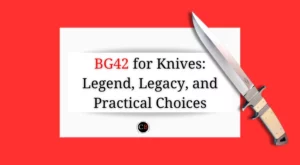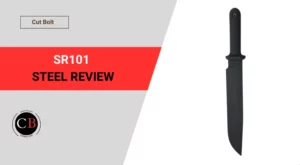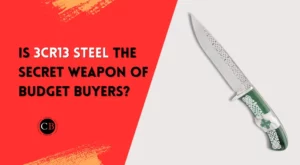VG10 steel boasts a legendary reputation in the knife world, promising razor-sharpness that lasts. But is it all hype, or does it live up to the buzz?
VG10 steel is often used in knife blades. Is VG10 steel good for knives?
The G stands for “Gold”, which refers to the “gold standard” that this stainless steel has met. It was invented by Takefu Special Steel Co. Ltd. in the Japanese knife metropolis of Takefu. It is also manufactured in Echizen, a former knife and sword-making center of Japan. It is also the Japanese cutlery market where this type of steel is traditionally used the most, especially for kitchen knives.
However, V10 steel is not only used for kitchen knives. Over the years VG10 has also found its way into non-kitchen knives such as EDCs, hunting and tactical knives, most notably through manufacturers Spyderco, Kizer and Fällkniven.
Table of Contents
What is VG10 steel?
VG10 (also VG-10 or VG 10) is a high-quality Japanese stainless steel with a high carbon and vanadium content. It is one of the most popular steels in Japan and is produced by Takefu Special Steel Corporation based in Fukui Japan.
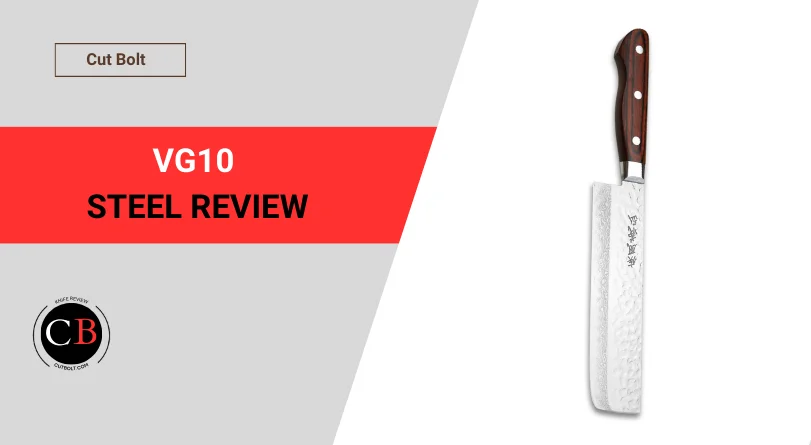
VG10 steel composition
“V Gold 10”, is a high-quality stainless knife steel with a high carbon content. It is made from strictly selected, pure iron and processed using the best technologies. VG10 is also free from corrosion caused by impurities and achieves good wear resistance. In addition to iron, it consists of:
- Carbon: 1%
- Chromium: 15.5%
- Molybdenum: 1%
- Vanadium: 0.2%
- Cobalt: 1.5%
- Manganese: 0.5%
The addition of these elements makes the matrix (the substrate) stronger and prevents carbides from falling out. The addition of vanadium makes the structure finer. Together, chromium, molybdenum and vanadium form many hard carbides, so that the abrasion resistance is improved, which enables the knives to cut cleanly in the long term. VG10 is fairly easy to machine and easy to grind.
What is the hardness of VG10 steel?
According to Takefu Special Steel, the maximum Rockwell hardness of VG10 is 60HRC.
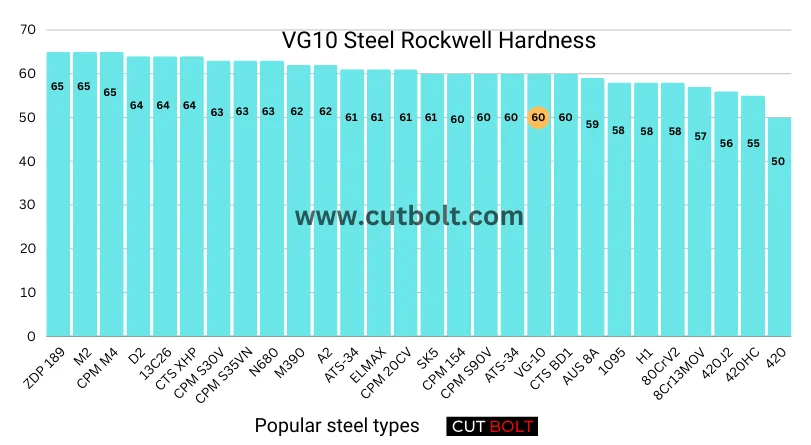
You will find some VG10 steel with 61 HRC, but in general for knife making, we find 60 HRC of VG10.
Is VG10 a stainless steel?
VG10 is a rust-free steel, but is it also a stainless steel? Yes, it is both rust-free and a stainless steel. To be considered rustproof, it must have a chromium content of at least 10.5 – 13%, depending on the definition, which must be dissolved in the austenite or ferrite (see here). VG10 contains 15.5% chromium which is more than enough to be rust-free.
Furthermore, the sulfur and phosphorus content (so-called iron companions) must not exceed 0.025% (see here). Since VG10 is free of sulfur, but contains more than the 0.025% phosphorus permitted by definition, VG10 is, strictly speaking, NOT stainless steel.
Related: Is O1 a super steel for knives?
Properties and characteristics of VG10 steel
Depending on the chemical composition and hardness of VG10, it offers the following properties and characteristics:
- Edge retention: With a hardness of 60HRC, VG10 is a hard steel that offers good edge retention.
- Corrosion resistance: 15.5% chromium is a good indication of VG10’s excellent corrosion resistance, which is why it is considered one of the best steels for corrosion resistance (although this does not mean that it is immune to corrosion).
- Wear resistance: As a high-end steel with a high carbon content, VG10 steel offers high wear resistance.
- Sharpness: VG10 is comparatively easy to sharpen thanks to the combination of its alloy metals, despite its hardness of 60HRC. As a rule of thumb, it can be said that steel up to 60HRC is easy to sharpen with conventional watered whetstones. Above 60HRC, however, you will do yourself a favor if you invest in a diamond whetstone.
- Machinability: VG10 steel is very easy to machine and easy to grind.
- Toughness: VG10 is a robust steel as it contains a high proportion of chromium and molybdenum, which gives it high toughness and strength.
Advantages and disadvantages of VG10 steel for knife making:
Pros
- Insane edge retention: Stays sharp significantly longer than most steels, meaning fewer sharpening sessions.
- Tough as nails: Resists wear and tear, making it ideal for heavy-duty tasks.
- Beautiful patina: Develops a unique character over time, adding to its charm.
Cons
- Prone to rust: Requires regular maintenance to keep it looking its best.
- More expensive: VG10 knives can be on the pricier side.
- Can be challenging to sharpen: Requires a skilled hand to achieve a perfect edge.
Comparing VG10 steel with similar steel
I have compared a few steels similar to VG10 for you:
VG10 vs VG10W steel
Takefu also produces a modified version of VG10 steel. That steel is VG10W, which also contains 0.4% tungsten. There has been much speculation as to whether and why this is the case.
In general, tungsten is a welcome addition, as it is a good carbide former and also improves hardenability. At only 0.4%, there are very few tungsten atoms that influence the alloy properties. The same amount of vanadium would affect three times as many atoms.
In reality, however, it is rather difficult to recognize the difference between two otherwise identical knives if one of them is made of VG10W. It is also possible that it is only added to optimize certain work processes.
VG10 and VG1 steel
VG10 should not be confused with VG1 steel. They are not the same. Both types of steel are produced by manufacturers in Japan and elsewhere, but VG10 steel is considered the higher grade. This is also the reason why it is quite common in kitchen knives and other cutting tools, but practically non-existent in collectibles and display pieces such as swords.
VG1 steel, on the other hand, is much more common in knives and swords from a wide variety of retailers and is also found in a greater variety of different products.
However, due to their relative prevalence, it is easy to confuse the two types of steel. Not good, especially if you as a customer pay the price for a blade made of VG10 steel but only get VG1 steel in return – so keep your eyes open when buying a knife!
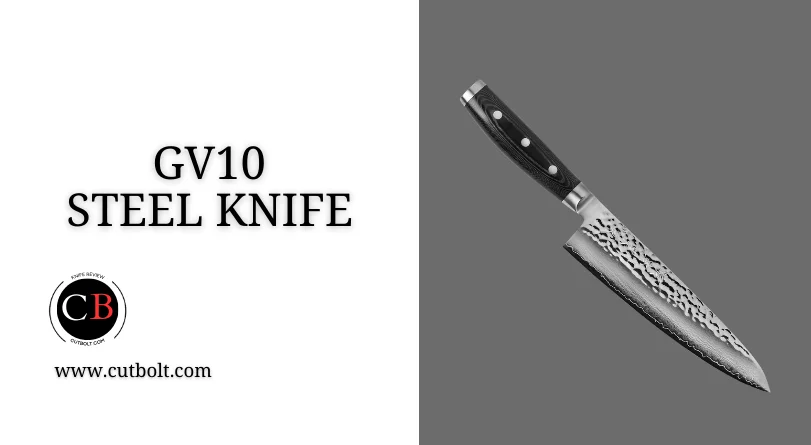
Four reasons to choose VG10 steel for knives
VG10 is one of the most loved steel for knives. However, I picked four important points in favor of VG10 steel for knives:
- It does not rust: VG10 DOES NOT RUST. You can stick a knife made of VG10 steel in the snow overnight and it won’t rust.
- Sharpness: VG10 blades can be sharpened to razor sharp, and after blunting you can get them that sharp again, even if you are not a gifted knife sharpener, and it doesn’t take long.
- Edge retention: VG10 can withstand two or three weeks of intensive/regular EDC use. After that, it’s no longer razor sharp, but it’s still sharp enough to cut well.
- Price: This is where it really shines. The qualities mentioned above can also be found in many other steels, but many are more expensive and for some contemporaries unattainably expensive. If you compare an S30V knife with one made from VG10 steel – all other parameters being equal – then the VG10 knife is probably around 1/5 cheaper. In other words, if an S30V knife costs 100 dollars, for example, you can get an equivalent VG10 knife for 90 dollars, often even less.
VG10 steel equivalent
The steel that comes closest to VG10 in terms of properties and composition is probably Böhler N690 from the Austrian company Voestalpine Bohler Edelstahl GmbH. Of course, the composition is not identical, but it has the same properties. Bohler N690 is also free of sulfur and phosphorus, making it a “real” stainless steel.
If you prioritize sharpness and durability, and don’t mind a little extra TLC, VG10 is a dream come true. But if budget is a concern or you prefer low-maintenance blades, other steels might be a better fit. Ultimately, the best knife steel is the one that suits your needs and preferences. Do your research, weigh the pros and cons, and find the perfect blade to conquer your chopping board!
Is VG10 Steel for you?
Conclusion: Is VG10 steel good for knives?
If you are looking for a good knife, you should consider buying a knife with VG10. A knife made from VG10 steel would be more expensive than knives in the lower market segment, such as those made from 440 steel, but the extra investment is worth it. VG10 gives you the hardness of carbon steel but the corrosion resistance of stainless steel. This makes it ideal for chef’s knives and knives that are frequently abused (such as EDC knives).

